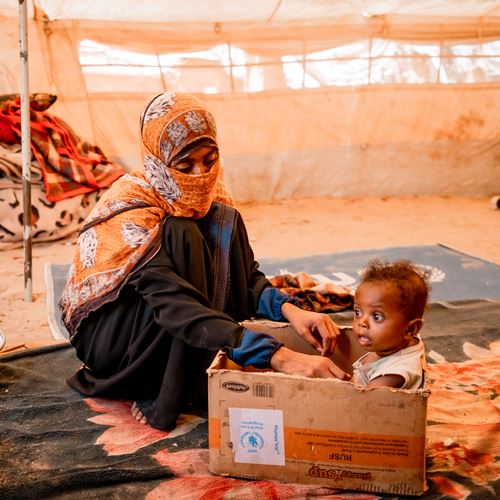Today, Yemenis face catastrophic needs driven by the growing economic crisis and ongoing multifaceted conflict, exacerbating poverty and hunger. Half the Yemeni population more than 18 million people urgently need humanitarian assistance to survive.
The UN led truce, which expired in October 2022, has resulted in a reduction of hostilities. While truce conditions largely continue to be upheld, parties have yet to reach an agreement on urgently needed measures to stabilize the economy.
Rising inflation, irregular or delayed payment of civil servant salaries, and the collapse of basic services, ha ve left people unable to meet their basic needs.
Yemen's economic landscape severely impact s food security, with staple food prices having surged by up to 45 per cent above the usual rates. The trend is projected to continue into 2024.
This price scalation is paralleled by a worrying devaluation of the Yemeni Rial, which has seen a steep drop in its value in recent months, placing further stress on the purchasing power of Yemeni families.
Recent assessments have identified a 12 per cent increase in the number of people experiencing acute food insecurity at Integrated Food Security Phase Classification (IPC) Phase 3 (crisis) level or worse in IRG areas alone.
The situation underscores the significant deterioration in the humanitarian crisis, with nearly half of the population in affected areas across the country struggling to meet minimal food requirements.
The data reflects the reality of a deepening food security crisis that spans across the country, signaling a need for increased humanitarian assistance and economic support measures to assist those in the most vulnerable situations.
New figures from the United Nations Development Programme (UNDP) reveal that more than four in every five people in Yemen almost 83 per cent of the population live in multidimensional poverty.
These new findings are based on the first in person household surveys collected since the start of the conflict, that measure poverty across a range of dimensions including health, education, and living standards.
Lack of schooling and access to adequate sanitation were two of the most concerning dimensions of poverty affecting more than 70 per cent of the population. Poverty tended to be higher in rural areas (89 per cent) than urban areas (67 per cent).
As a result, families are being forced to choose between food and education for their children, resulting in an increase in school dropouts, early marriage and child labor, exacerbating protection risks and vulnerabilities.
By the end of 2023, the Humanitarian Response Plan ( was only 39.3 per cent funded, forcing many aid organizations to reduce or close critical assistance programs.
This concerning trend continues with only 9.1 per cent of the HRP 2024 funded so far this year. Despite these challenges, humanitarian agencies continue to provide lifesaving assistance.
However, significant gaps in coverage and access to services persist. In a recent study, 15 per cent of surveyed households in Yemen reported having no access to any basic commodities including water, hygiene items, fuel, and medication, increasing to as much as 33 per cent in some governorates.
We urge all parties to uphold the principles that must guide our humanitarian efforts. We note with concern the current humanitarian funding situation.
It is imperative that aid is allocated based on need alone, to prevent exacerbating the already dire conditions for those most in need. It is our collective responsibility to provide equitable support, fostering unity and healing divisions.
We recognize the complexities involved in coordinating international aid and the challenges that come with it. Yet we must strive to rise above these challenges, ensuring that the aid provided is a bridge to a more stable and prosperous future for all Yemenis. We call on all parties to address the underlying economic drivers of the conflict and put Yemen on a path to lasting peace.
The HRP 2024 of $2.7 billion must be fully funded to meet the urgent needs of approximately 11.2 million people that the humanitarian community aims to reach across the country.
We call upon the international community to respond with increased funding and support, to invest not only in the immediate needs but also in the long term recovery of Yemen.
Only together can we forge a path to recovery and peace for Yemen. As we mark nine years since the conflict, we must not turn away. Every day, the needs grow, and the gap in funding widens our unwavering commitment is more crucial than ever.
